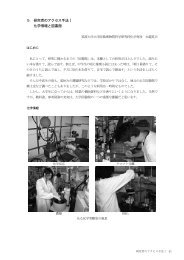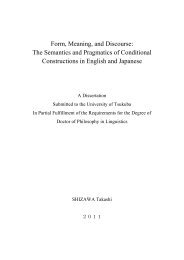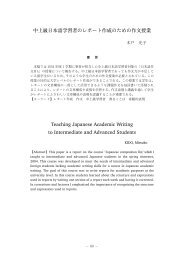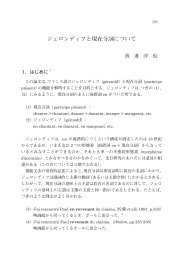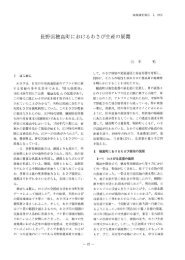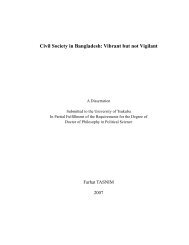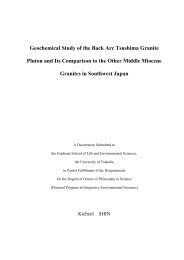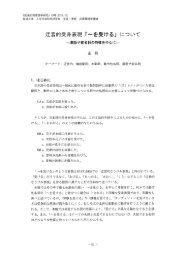Gamma Rays and CarbonIon-Beams Irradiation for Mutation ...
Gamma Rays and CarbonIon-Beams Irradiation for Mutation ...
Gamma Rays and CarbonIon-Beams Irradiation for Mutation ...
Create successful ePaper yourself
Turn your PDF publications into a flip-book with our unique Google optimized e-Paper software.
varieties bred at the Jamaican programme in the 1960s <strong>and</strong> the dessert<br />
varieties of the FHIA (Fundación Hondureña de Investigación Agrícola)<br />
program do not have the enough shelf-life <strong>and</strong> flavor comparable with<br />
‘Cavendish’ <strong>and</strong> have not been adopted as export bananas. If consumers in<br />
tasting panels have only one impression of a banana flavor, that of<br />
‘Cavendish’, which has been the only ripe banana on sale <strong>for</strong> most peoples'<br />
life time, it is not surprising that bananas with slightly different flavors may<br />
be less favored simply because they do not taste like a “typical” banana<br />
(FAO, 2001a).<br />
The development of the ‘FHIA-01 (Goldfinger)’ <strong>and</strong> ‘Mona<br />
Lisa’ bananas through a cross-breeding program launched in 1985 has been<br />
the most significant success in Honduras <strong>and</strong> Latin America. Working with<br />
the Honduran Foundation <strong>for</strong> Agricultural Research (FHIA) <strong>and</strong> the<br />
International Network <strong>for</strong> the Improvement of Banana <strong>and</strong> Plantain,<br />
researchers in Honduras developed <strong>and</strong> tested new hybrids of bananas <strong>and</strong><br />
plantain that were resistant to black Sigatoka spot disease. The ‘Goldfinger’<br />
<strong>and</strong> ‘Mona Lisa’ bananas can be cultivated in poor soil <strong>and</strong> cooler<br />
temperatures <strong>and</strong> are highly productive, growing large bunches resistant to<br />
Panama disease race 4 which attacks the most common export banana<br />
(IDRC, 2002).<br />
According to the FAO (2003), banana is essentially a clonal<br />
crop with many sterile species, which makes progress through conventional<br />
breeding slow <strong>and</strong> difficult. Because of this, new breeding methods <strong>and</strong><br />
tools, including biotechnology, will be helpful to develop resistant bananas<br />
<strong>for</strong> cultivation. This does not necessarily mean the use of transgenics. FAO<br />
has called <strong>for</strong> the development of more diversity in the banana, especially<br />
<strong>for</strong> export bananas; promoting awareness of the inevitable consequences of<br />
a narrow genetic base in crops <strong>and</strong> the need <strong>for</strong> a broader genetic base <strong>for</strong><br />
commercial bananas; <strong>and</strong> strengthening plant-breeding programs in<br />
8




